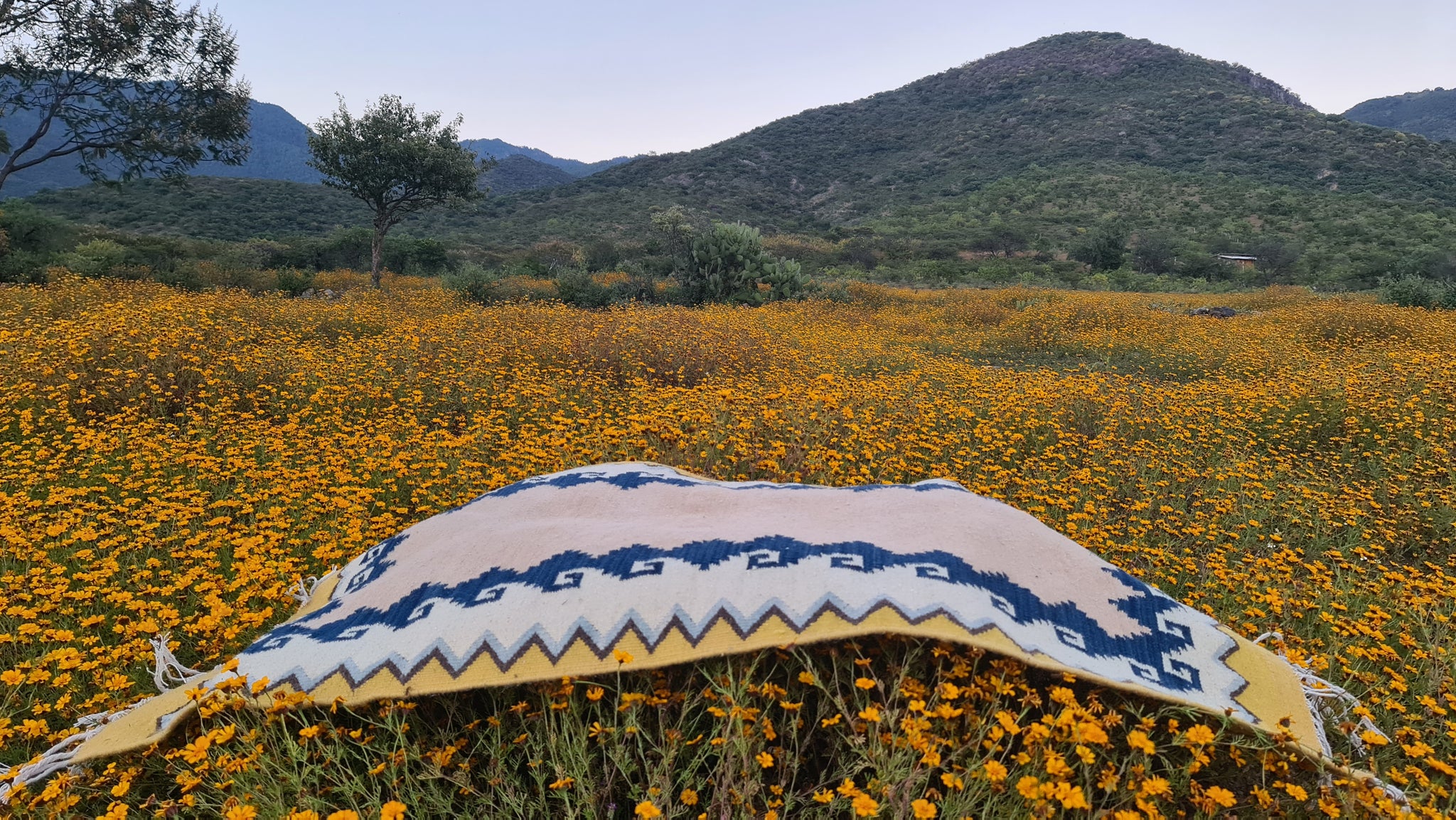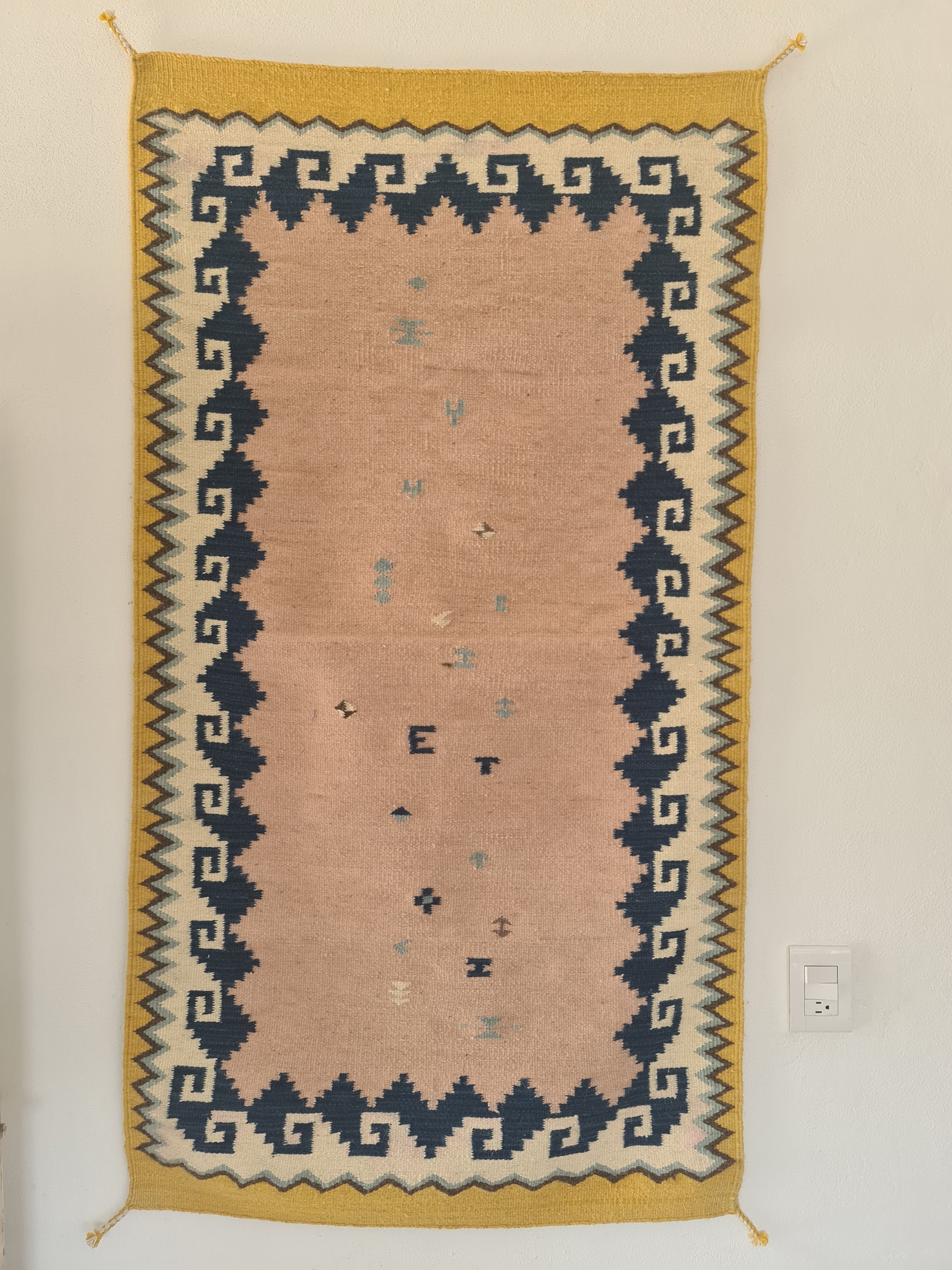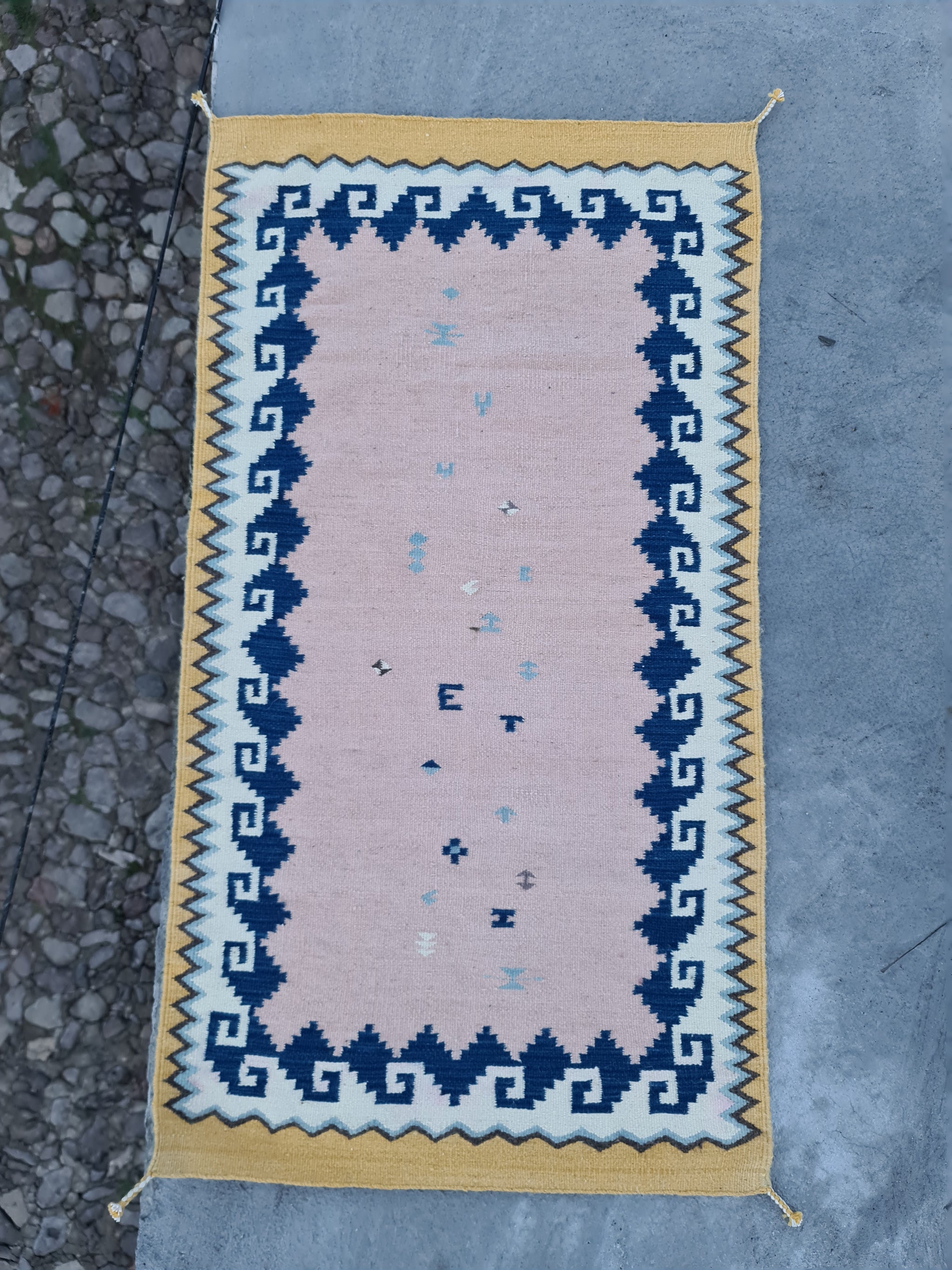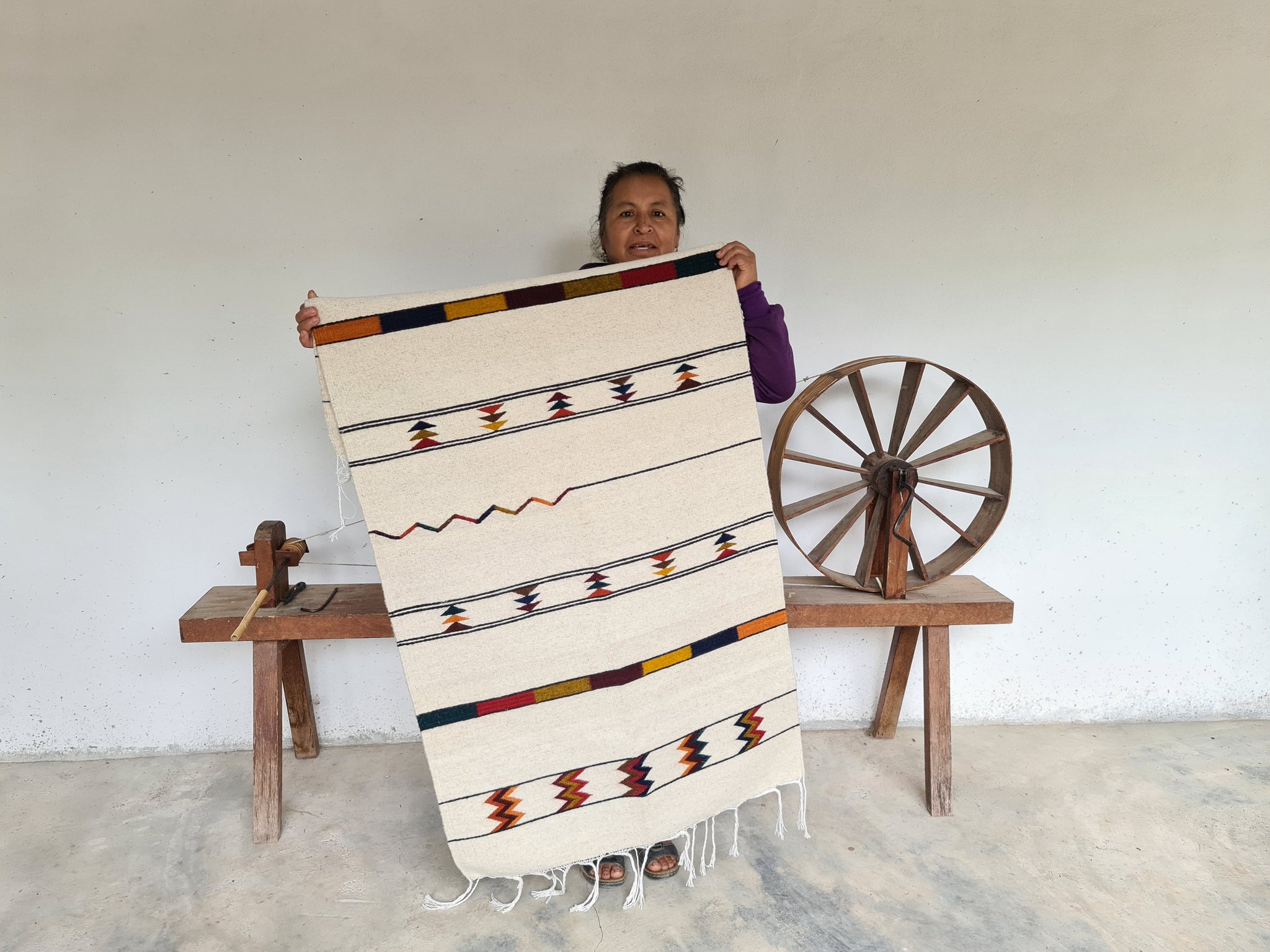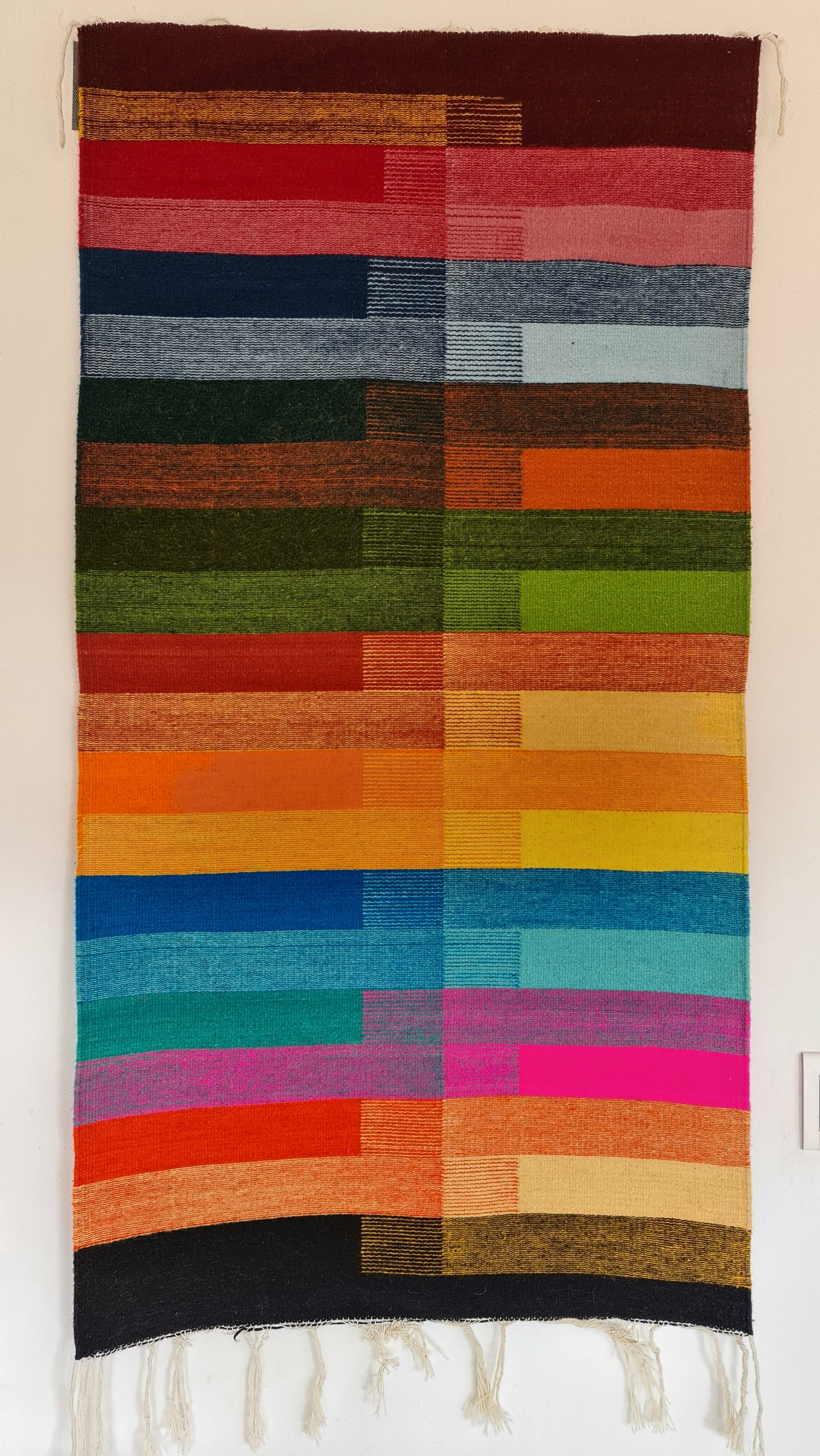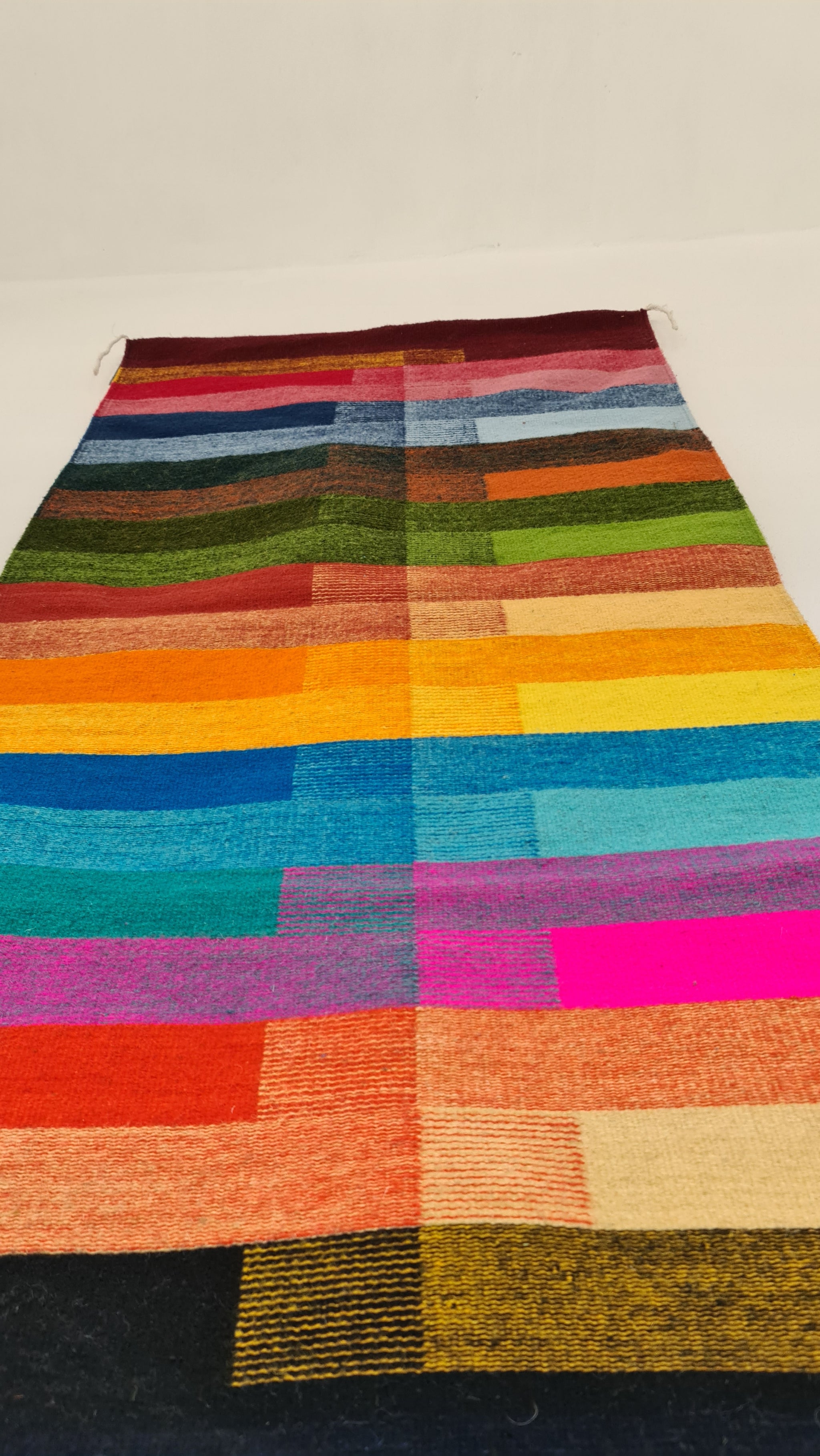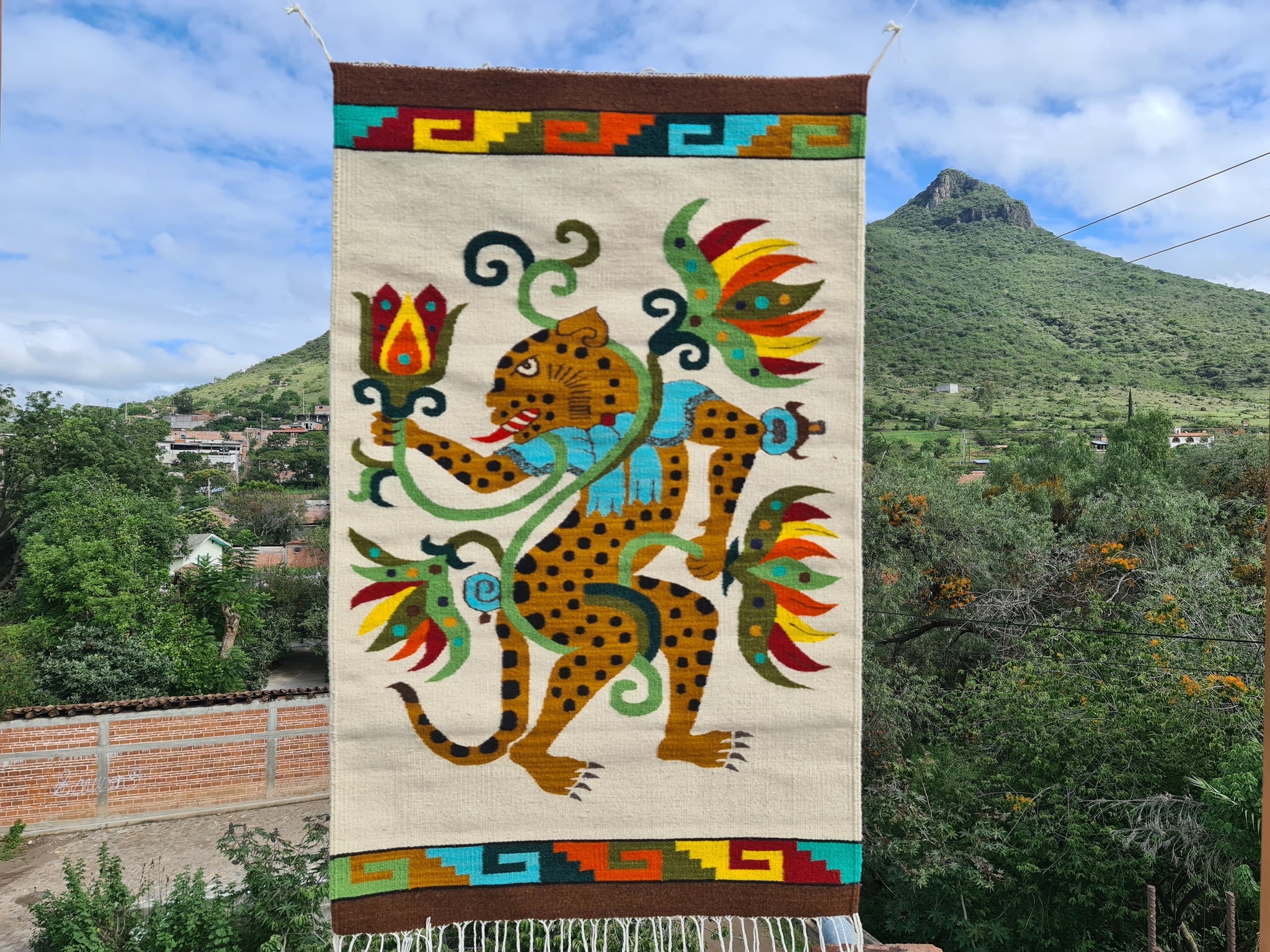Galbaiín: The cycle of life
$ 12,500.00
80x150cm 2.6x5ft
Weaver: Rosa Sosa
Materials and methods. Fine merino wool natural dyed with indigo, tagetes lucida and coffee/cochineal. Hand woven on a walking Zapotec loom of the 16th century style.
Patterns and symbols: the cycle of life pattern that surrounds the rug is the symbol one gets by joining both hands at the tips of the fingers similar to a mudra. This union represents the balance of the left and right side of our awareness. On one hand, the left side we call Rubeæz and denotes the type of awareness associated to our intuition and conection to nature and the spirit world, for instance the words for Jaguar, ants, genitals, censer, etc... are associated with our word for left. On the other hand we have the naliì awareness, the awareness associated with language and logic that allow us to understand the cause and effect phenomenons of the physical world; words associated are music, straight lines and honesty, keys and locks etc. The ancient teachings can be summarized in the moto live a life of balance, this is expressed in the subtle balances of the pattern in the four sacred directions.
There is a complementary Quincunce pattern, the "pyramid" like shapes under the cycle of life, we can see that in every side of the rectangle there is a point where a full Quincunce shape is formed as the union of two inverted pyramids; this represents the balance of the four directions. It is believed that the Quincunce was used to graph and measure astronomical phenomenon such as the apparent moment of the sun from sunrise, to midday and sunset, and the same steps taken into the underworld to complete the cycle. The quincunce thus represents the balance of the spiritual and earthly energy, the heavens and the underworld and the middle point being the cuadrant of the four directions where humans live their mortal dream.
The center of this rug has small ancient symbols that were clumped together to tell stories in a glimpse, because our weavings are our books, our elders also introduced letters from the Spanish alphabet and took pride in weaving words and phrases into textiles. The Textile museum in Oaxaca had a whole exhibition dedicated to this idea, the word tejer in Spanish and the word texto have a similar origin in the word technique.
The zigzag pattern on the outer frame represents lightning, the slither of the snake in the sky, pointing to the principle as it is below so it is above. When you look at lightning, the way it bifurcates resembles the tonge of a snake. The elders say that the cosmic snakes fall from the sky to announce the rains, this phenomenon was written in the architecture of Chichen Itza by the Mayans.
Share:
Related Items
Reepi shchaá: the flow of the spirit
$ 6,500.00
Size: 80x150cm; 2.6x5ft Weaver: Herlinda Ruiz Bazan Materials ans methods: criollo sheep wool hand dyed with colorfast aniline dyes using an exhaustive method. Handwoven on a Zapotec style loom of the...
Yeéti: rainbow
$ 7,150.00
Size: 80x150cm Weavers: Francisca Hipólito Variant 1 Belen Bautista, Variant 2 Price: $350USD Materials and methods: criollo sheep wool hand dyed with colorfast aniline dyes using an exhaustive method. Handwoven...
Beaz guie'a: water lily Jaguar
$ 14,000.00
Size: 81x121cm; 32x47.6in Materials and methods: criollo sheep wool hand dyed with colorfast aniline dyes in exhaustive dye vat. This tapestry work was handwoven on a Zapotec walking loom of...



